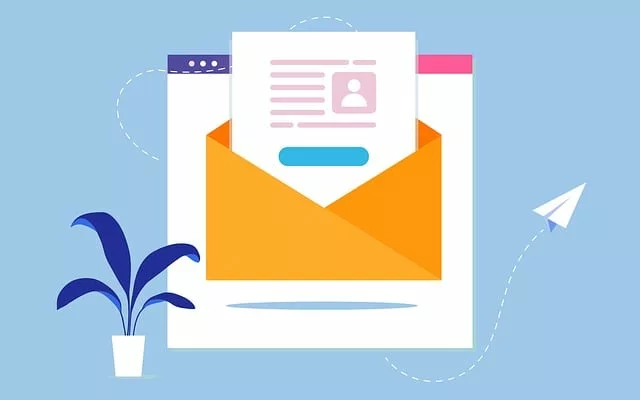Affiliate marketing is a dynamic and highly competitive field where minor improvements can lead to significant gains. Nowhere is this more evident than in email marketing. While the content of your emails may be well-written and your intentions aligned with your audience’s needs, there’s no guarantee that your campaign is performing at its full potential. That’s where A/B testing steps in.
For affiliate marketers, especially those promoting trusted platforms like Wealthy Affiliate, A/B testing is one of the most powerful tools for maximizing conversions. It enables you to experiment with different variations of your emails to determine what resonates most with your audience. This means higher open rates, more click-throughs, and ultimately, more commissions.
In this article, we’ll dive into the practical application of A/B testing in email campaigns. You’ll learn what to test, structure your experiments, interpret results, and use those insights to refine your strategy continually. The goal is straightforward: to help you optimize every email you send, enabling you to maximize the potential of every lead on your list.
What Is A/B Testing and Why Does It Matter?
A/B testing, also known as split testing, compares two versions of an email (or other marketing asset) to determine which one performs better. You send version A to a subset of your list and version B to another, then analyze the performance metrics such as open rates, click-through rates, or conversions to determine which variant had the greater impact.
This process matters because guessing isn’t effective. Even if you’ve been writing affiliate emails for years, what you assume will work might not be what your audience responds to. A/B testing removes the guesswork. It provides data-driven insights into how real subscribers engage with your content.
Optimizing email performance is crucial for affiliate marketers working with recurring programs, such as Wealthy Affiliate, where long-term member retention is a key priority. Whether nurturing leads, promoting a webinar, or sending a welcome series, A/B testing can help you identify the content and structure that drives the most results.


The Right Mindset for Testing: Curiosity, Not Perfection
One of the biggest misconceptions about A/B testing is that a “perfect” version is waiting to be discovered. The truth is, A/B testing is an ongoing process. Markets shift, and audiences evolve. What works today might not work six months from now.
Approach testing with curiosity. Be willing to explore new ideas, challenge assumptions, and test things that feel counterintuitive. Some of the most surprising wins in email marketing have come from unconventional experiments, such as removing images, shortening subject lines, or adjusting the time of day emails are sent.
Your role as an affiliate marketer is to deliver content and continually improve how that content is delivered and received. A/B testing provides a framework for that improvement.

Key Elements You Can Test in Email Campaigns
When it comes to email marketing, nearly every element can be tested and optimized. However, not all tests are equally impactful. Let’s explore the components that most commonly influence performance and conversions.
Subject Lines
Your subject line is your first, often only, chance to grab attention. It’s the gatekeeper between your message and your reader’s eyes. A/B testing subject lines can dramatically improve open rates.
Try experimenting with tone (curious vs. direct), length (short vs. detailed), personalization (using the subscriber’s name), or even formatting (questions vs. statements). If you’re promoting Wealthy Affiliate, you might test:
- “How I Earned My First Commission in 30 Days”
- “Start Affiliate Marketing Without a Website?”
Both touch on the same topic but use different emotional triggers and levels of specificity.
Preview Text
Often overlooked, the preview text appears alongside the subject line in most inboxes. It acts as a teaser for the email content. A/B testing this element can support or sabotage the effectiveness of your subject line.
Try using preview text that adds context, creates urgency, or addresses a pain point. For example:
- “No experience? No problem. Here’s how to start.”
- “This free tool changed how I approach affiliate marketing.”
Send Time and Day
Not all subscribers check their email at the same time. Some are more responsive in the morning, while others are more responsive during evenings or weekends. You can determine when your audience will most likely engage by testing different send times.
This is particularly useful if your audience includes people in different time zones or with diverse lifestyles, such as side hustlers who check email after work or early risers who read during their morning coffee.
Email Copy
The body of your email is where the real persuasion happens. You can A/B test everything from the length of the content to the tone of voice, paragraph structure, and storytelling techniques.
Do readers respond better to a long-form narrative sharing your journey with Wealthy Affiliate, or a quick list of benefits and a call to action? Test both. Pay attention to readability and flow. Shorter paragraphs, strategic bolding, and clear sections often lead to better engagement.
Calls to Action (CTAs)
Your call to action is the tipping point between interest and action. It’s where you ask the reader to click, sign up, or purchase. Even minor tweaks here can lead to significant performance changes.
You can test:
- Button text (e.g., “Get Started Now” vs. “Claim Your Free Trial”)
- Placement (beginning vs. end vs. multiple CTAs)
- Design (text link vs. button)
- Clarity vs. curiosity (“Start Learning Affiliate Marketing” vs. “Discover the Platform Everyone’s Talking About”)
For Wealthy Affiliate promotions, clarity often works best, especially when paired with specific benefits.
Link Placement and Frequency
Too many links can overwhelm readers; too few can lead to missed opportunities. A/B test how many links you include, where they are placed, and whether text links or buttons perform better.
Also, test linking different anchor texts. Rather than linking a generic “Click here,” test contextual links like “start your free Wealthy Affiliate trial” or “see how this platform helps beginners succeed.”
Sender Name and Email Address
Who your email is from can affect whether it gets opened. Some audiences prefer informal names, such as “Ed from Affiliate Insights,” while others respond better to full names or branded emails.
Try testing:
- First name only
- Full name
- Brand + name combo
- Support or team addresses
The key is trust. That familiarity can boost open rates if your subscribers know and recognize your name.

Structuring a Proper A/B Test
While testing everything at once is tempting, the most effective A/B tests isolate one variable at a time. If you change both the subject line and the CTA in a single test, you won’t know which change caused the difference in performance.
Start with a single hypothesis. For example:
- “Adding a curiosity-based subject line will increase open rates.”
- “Placing the CTA in the middle of the email will increase clicks.”
Then create two versions of the email, identical in every other way, and split your list randomly. Most email marketing platforms automatically handle this.
Allow the test to run for a statistically significant period and with a sufficient sample size. Don’t jump to conclusions based on a few clicks. Typically, you want at least a few hundred recipients per variation, depending on the size of your list.
After the test concludes, review your metrics:
- Open Rate indicates the effectiveness of your subject line and sender name.
- Click-through rate (CTR) shows how compelling your content and CTAs are.
- Conversion Rate tracks how well your email leads to your desired action, such as signing up for Wealthy Affiliate or downloading a free resource.
Turning Data Into Action
Testing without analysis is pointless. Once you have your results, apply the lessons to future campaigns. If a casual tone increases clicks, incorporate that voice across more of your emails. If a particular CTA performs well, consider using it in other contexts, such as landing pages or webinars.
Document your tests and findings. Over time, you’ll build a valuable library of insights specific to your audience. This is especially powerful if you’re in a niche under the Wealthy Affiliate umbrella, such as blogging, SEO, or digital entrepreneurship. Each niche has its communication style and expectations. Your tests reveal what speaks most directly to your audience.
Use each winning test as a new control. Then iterate again. Email optimization is a continuous improvement cycle. You’ll rarely find a one-size-fits-all formula, but you will discover patterns and preferences that shape better marketing.
Mistakes to Avoid in A/B Testing
While testing is a valuable strategy, there are pitfalls to be aware of.
Testing too many variables at once leads to ambiguous results. Always isolate the element you’re testing.
Another issue is running tests on a sample size that is too small. Without enough data, your results may be statistically insignificant or misleading.
Concluding too early is a common trap. Let your test run its full course, ideally at least 48 to 72 hours, depending on your audience and send time.
Failing to retest winning variations can be just as limiting. A subject line that performs well today may not be effective next quarter. Consistent testing keeps your strategy fresh and relevant.
Finally, don’t ignore your audience’s feedback. If subscribers reply to an email with appreciation or suggestions, take it into account. Quantitative data tells one side of the story, but qualitative feedback can reveal more profound insights.
Email Testing as a Long-Term Success Strategy
A/B testing isn’t a one-off tactic; it’s a long-term discipline that compounds over time. The more you test, the more you learn about your audience. You move from guessing to knowing. And that shift transforms your marketing.
Every email is an opportunity for affiliate marketers promoting recurring-income platforms like Wealthy Affiliate. Not just to sell, but to build trust, educate, and lead subscribers to a solution that improves their lives.
When your emails consistently reach the inbox, engage the reader, and drive action, your business grows sustainably and reliably.
A/B testing makes that growth possible.

